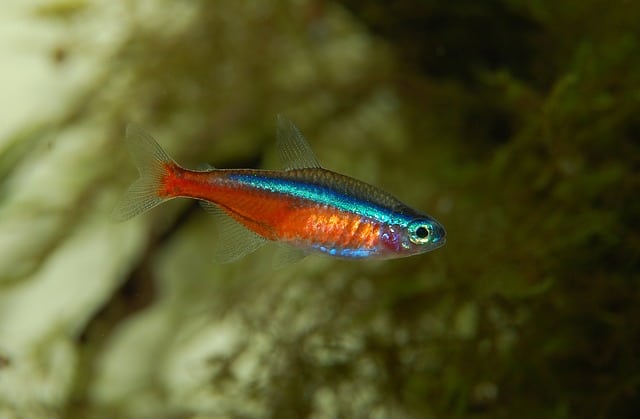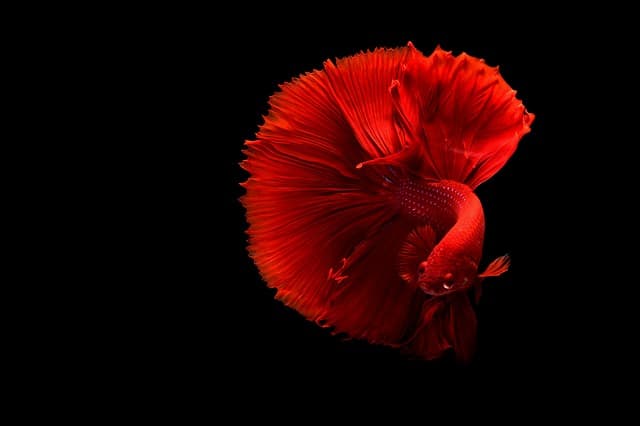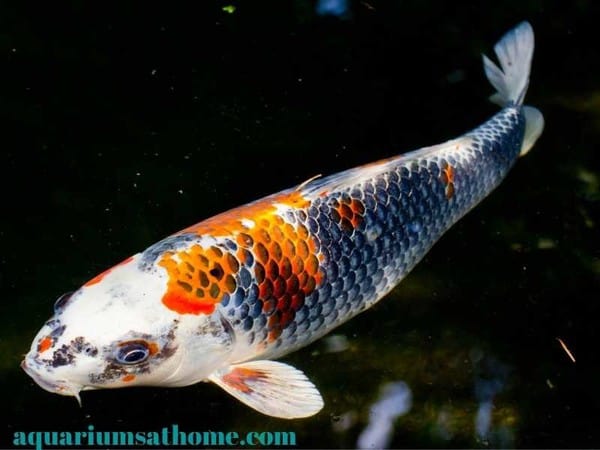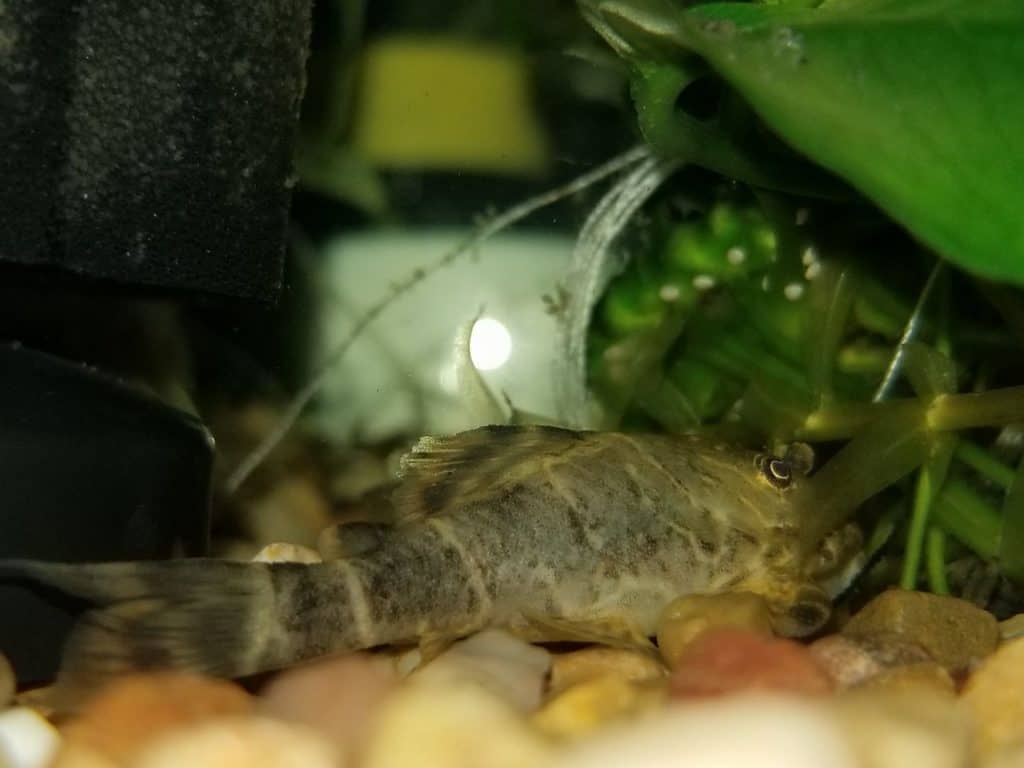Planted aquariums are gaining popularity at a heightened pace. Now that live plants are easily available at your local fish store and online at your favorite aquarium website, it is easier than ever to get the plants you want in a timely fashion. The secret is out on just how simple it is to grow live plants in a freshwater tank! It does take a bit more effort to maintain live plants, however, it can be both fun and functional at the same time – not to mention the added health benefit to the fish in the aquarium.
The best freshwater fish for planted tanks include Cory Catfish, Neon Tetras, Guppies, Rasboras and Loaches. These are some of the most common fish available for aquarium enthusiasts.
Are you ready to go into detail on the 20 best fish for your planted aquarium? If so, then let’s begin…
Starting a live planted tank is very exciting. The possibilities are endless and the joy one gets from watching his/her beautiful creations come to life is so very fulfilling. Below we cover what are often considered the best small fish for a planted tank (and we even throw in a couple larger fish options for the bigger aquariums).
You will also notice we have made this process even easier by explaining (in an easy-to-read sub-heading format) which fish are compatible with which others so you can proceed to stock your community aquarium with confidence. The best schooling fish for planted tanks are also identified below.
1. Freshwater Shrimp
Behaviour: A gentle, non-aggressive species that is active during daylight hours and spends most its time grazing along the bottom of the tank.
Diet: Fish flakes, pellets for shrimp and algae wafers are common edibles for this type.
Schooling fish? No they aren’t technically a schooling fish however having multiple shrimp in a live planted tank are always a treat to watch and take care of.
Proper PH: Between 6.5 and 8.0
Compatibility with other fish from this list: For your shrimp you could have them with Rasbora’s or some Cory Catfish. When researching other options stay away from carnivores as they will make quick work of your pet shrimp.
Recommended tank size: 5 gallons or larger. A good ratio is 5 shrimps for every 1 gallon of water.
2. Corydoras Catfish
Behaviour: An active fish that spends most of its day swimming about while preferring to lay motionless at night.
Diet: These are bottom-feeders that prefer to eat fish flakes and pellets.
Schooling Fish? Yes definitely and they seem to be happiest when there are 5 or more grouped together.
Proper PH: Between 7.0 and 8.0
Compatibility with other fish on this list: Cory Catfish are very passive fish that go about the day minding their own business so feel free to place them with any passive fish in this list. Neon Tetras, Blue Ram, Dwarf Gourami are a few to choose from.
Recommended tank size: They can survive in as little as 5 gallons of water but larger is better, anywhere between 10 and 30 gallons especially when grouping these active fish with 5 or more.
3. Black Ghost Knife
Behaviour: A nocturnal fish, this type is calm during the day, preferring to stay hidden in caves or foliage while becoming more active at night. It is usually timid with larger fish but will fight with its own!
Diet: This species does not like fish flakes, but rather brine shrimp, bloodworms and frozen meaty foods.
Schooling Fish? No. Just no.
Proper PH: Between 6.0 and 8.0
Compatibility with other fish on this list: If you decide to own a Ghost Knife fish and place it in a live planted tank I would just keep the one fish. They really are timid and will not come out of hiding if there are other overly active fish in the tank.
Recommended tank size: The larger the better, at least 100 gallons of water or more. Just imagine how beautiful a 100 gallon live planted aquarium would be.
4. Kuhli Loach
Behaviour: Considered a semi-aggressive fish when alone in a community tank, it is best to keep them in groups of at least six or more. Since Loaches like to burrow in the bottom of the tank you might find them digging up some plants that are not well rooted or planted. It is something to consider.
Diet: A carnivorous fish, they will often eat fish flakes and pellets but should also be given bloodworms, brine shrimp, mosquito larvae and other frozen meaty foods.
Schooling Fish? Yes as mentioned above to keep Loaches in groups of 6 or more.
Proper PH: Between 5.5 and 6.5
Compatibility with other fish on this list: These fish can be kept with most of the smaller fish in this list.
Recommended Tank Size: A minimum of 20 gallons of water is best.
5. White Cloud Minnow
Behaviour: A peaceful fish that should be kept with at least six or more of its kind in a community tank, they are often recommended for beginner aquarium hobbyists.
Diet: An omnivore, this fish lies to eat fish flakes, brine shrimp, mosquito larvae and other frozen meaty foods.
Schooling Fish? Yes as previously mentioned the white cloud minnow should be kept with at least 5 or 6 of its own.
Proper PH: Between 6.0 and 8.0
Compatibility with other fish on this list: Select any of the peaceful smaller fish in this list and you should be good.
Recommended tank size: A 10 gallon tank is sufficient. That being said I would always recommend a much larger aquarium when having a community tank as well as all of the live plants. Go with 50 gallon minimum if you can afford it.
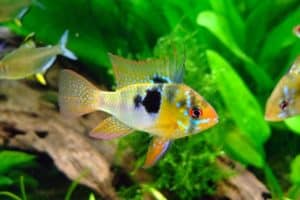
6. German Blue Ram
Behaviour: A docile fish that should not be in a community tank with overly aggressive or active fish. They need the company of other peaceful fish in order to feel safe.
Diet: This type prefers fish flakes and pellets as well as brine shrimp and other frozen meaty foods.
Schooling fish? Yes they can be kept in small or larger schools. Having two of these beautiful fish is a minimum.
Proper PH: Between 5.0 and 6.0
Compatibility with other fish on this list: Go ahead and place your Rams in with Angelfish and some of the smaller fish like Neon Tetras or Rasboras.
Recommended tank size: At least 20 gallons of water is required for this species to thrive although bigger is better!
7. Molly Fish
Behaviour: A peaceful fish, this type does well in a community tank.
Diet: This fish likes to eat fish flakes, blood worms, black worms, brine shrimp and other frozen meaty foods.
Schooling fish? Technically no however they can be placed in large groups of their own kind.
Proper PH: Between 7.5 and 8.5
Compatibility with other fish on this list? Gouramis and Tetras as well as a Betta fish are just fine.
Recommended tank size: A minimum of 30 gallons of water is required for this fish to survive.
8. Arowana Fish
Behaviour: Also known as Monkey Fish or Dragon Fish, this type is considered a predator fish and can be quite aggressive in a community tank.
Diet: Carnivorous in nature, this fish prefers live or frozen fish as well as blood worms, insects, krill and shrimp.
Schooling fish? Yes but to have more than 2 you would need a gigantic aquarium.
Proper PH: Between 6.0 and 7.0
Compatibility with other fish on this list: If you go with Arowanas then that is all that should be in the tank.
Recommended tank size: Juveniles can survive in a 60 gallon tank however adults require a much larger aquarium of at least 250 gallons of water!
9. Bala Shark
Behaviour: Although not an actual shark, this fish gets its name from its torpedo-like body shape and large fins. When alone in a community tank, this type is usually timid and peaceful in nature. With others of its kind, a dominant fish may try to bully the others.
Diet: This fish likes to eat blood worms, brine shrimp and crustaceans.
Schooling fish? No however they can be placed in a tank with other Bala sharks. Just be aware they are so fast and active they can easily disrupt your tanks décor.
Proper PH: Between 6.0 and 8.0
Compatibility with other fish on this list: Bala sharks can be placed with most other fish that are passive in nature.
Recommended tank size: A minimum of 150 gallons of water is needed, however, for this species, bigger is better!
10. Kissing Gourami
Behaviour: this semi-aggressive fish will do fine in a community tank as long as there are no other fish that look similar to it, especially in terms of size and shape. This species should not be in a tank with other types of Gourami fish.
Diet: As an omnivore, this type likes to eat algae flakes, blood worms, brine shrimp and other meaty foods.
Schooling fish? No. No more than two in your tank.
Proper PH: Between 7.0 and 8.5
Compatibility with other fish on this list: Most of the smaller fish in this list will work as well as the Cory Catfish.
Recommended tank size: A minimum of 30 gallons of water is needed for this fish, although more is often preferred.
11. Dwarf Gourami
Behaviour: Unlike the larger Gourami species, these fish are quite peaceful in nature. Males of the larger species will often attack or bully the Dwarf Gourami therefore they should not be kept in the same tank. These, however, can get along with their own.
Diet: These fish like fish flakes, frozen or freeze-dried food and vegetable tablets.
Schooling fish: No, but can live in a community tank in groups of two.
Proper PH: Between 6.0 and 8.0
Compatibility with other fish on this list: Again keep this fish with any smaller non aggressive fish from this list.
Recommended tank size: Unlike their cousin, the Kissing Gourami, these fish can survive in a much smaller tank, only requiring 10 gallons of water!
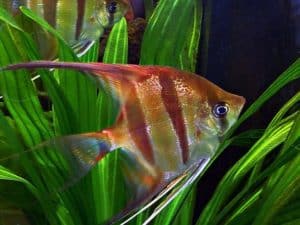
12. Angelfish
Behaviour: These Cichlids are, for the most part, peaceful when put in a community aquarium. They can be aggressive towards each other and will sometimes eat smaller fish! One pair per tank is recommended.
Diet: This species is not fussy and will eat a variety of foods including brine shrimp, blood worms, frozen meaty foods, fish flakes and small pellets.
Schooling fish? No unless you call having two in a tank a school of fish. Make sure to have two Angelfish.
Proper PH: Between 6.5 and 7.5
Compatibility with other fish on this list: Rasboras and Cardinal Tetras are okay. Stay away from Neon’s as they are small enough that a large rogue Angel might decide to eat one someday.
Recommended tank size: A 30 gallon aquarium (minimum) is required for this species. Please put them in a much larger aquarium though.
13. Harlequin Rasbora
Behaviour: This is a type of schooling fish that is both peaceful and lively. It does well in a community tank with at least ten of its own present.
Diet: As an omnivore, this fish likes to eat spirulina, algae wafers, fish flakes and as a treat, frozen or live foods.
Schooling fish? Yes the more the merrier.
Proper PH: Between 5.0 and 7.5
Compatibility with other fish on this list: It’s hard to find fish Rasboras don’t get along with. Just make sure you select other peaceful fish.
Recommended tank size: A minimum of 10 gallons of water is needed for this fish type. Go larger though. 30 is a better bet.
14. Cardinal Tetra
Behaviour: This is a lively fish that survives well in a community tank. It is a schooling type which should requires at least ten of its own to thrive.
Diet: Flake fish food makes up at least 75% of this species diet. It also can be fed live or frozen foods.
Schooling fish? Yes again the more the merrier.
Proper PH: Between 6.5 and 7.5
Compatibility with other fish on this list: Cardinal Tetras can be kept with quite a few of the fish on this list. They are just great tank mates.
Recommended tank size: A 20 gallon tank is the minimum required for an aquarium with ten Cardinal Tetra Fish present.
15. Neon Tetra
Behaviour: These are a very peaceful fish that do well in a community tank with other non-aggressive species of approximately the same size.
Diet: As carnivores, these fish prefer to eat blood worms and brine shrimp but will also ingest most freeze-dried and flake-type foods.
Schooling fish? Yes you can put as many of these cute little guys as you can afford in your tank. Their bio-load is very minimal.
Proper PH: Between 6.5 and 7.5
Compatibility with other fish on this list: Neons can be kept with most other peaceful smaller fish. Careful placing them in with larger fish like Angelfish as they might get picked off.
Recommended tank size: A minimum of 10 gallons of water is required for a tank containing approximately twenty four Neon Tetras.
16. Rainbow Fish
Behaviour: A very docile fish that gets along well with other small, non-aggressive fish in a community tank.
Diet: A variety of foods makes up this type’s diet including insects, tadpoles and algae as well as fish flakes and frozen foods
Schooling fish? Yes keep in groups of 5 or more.
Proper PH: Between 7.0 and 8.0
Compatibility with other fish on this list: Rainbows can be kept with other fish of similar or smaller size.
Recommended tank size: A 50 gallon tank minimum is required for this species as they need lots of room to swim.
17. Killifish
Behaviour: Another great example of a peaceful fish that gets along well with others in a community tank. However, males of this species can bully each other so it is best to have only one male (paired with one female) in an aquarium.
Diet: This type likes to eat brine shrimp, mysis shrimp, mosquito larvae and blood worms.
Schooling fish? No just a pair of a male and female.
Proper PH: A consistent PH level is best, between 6.5 and 7.0
Compatibility with other fish on this list: This is beginning to be a theme for this article. Keep your Killifish with other fish of similar size.
Recommended tank size: A 10 gallon tank is sufficient, however a larger one (30 gallons) is preferred.
18. Discus Fish
Behaviour: A type of Cichlid, this species is usually calm and lives peacefully with other fish in a community tank. However, the males can be aggressive with each other so one per tank is best, along with two or three females.
Diet: These fish prefer to eat brine shrimp, blood worms, earth worms and mosquito larvae.
Schooling fish? No however they can be kept with other Discus keeping in mind to only have one male in the tank.
Proper PH: A consistent PH level is key – 6.5 is ideal, no lower than 6.0 and no higher than 7.0
Compatibility with other fish on this list: Honestly if you have discus you might not want other fish in the tank. I would go with some Cory Catfish so you have something moving around on the bottom of the tank.
Recommended tank size: Bigger is better for this species so a minimum tank size of 100 gallons is required.
19. Guppy Fish
Behaviour: This type is a calm, peaceful fish that prefers to be kept in groups in a community tank. They are very active swimmers and are “on the move” constantly!
Diet: This species survives on edibles such as brine shrimp, blood worm, mosquito larvae and occasionally algae.
Schooling fish? Yes if you can afford 10 or more go for it.
Proper PH: Between 7.0 and 8.0
Compatibility with others on this list: The Cardinal Tetras are great and or the Rasboras to be kept with some Guppies.
Recommended tank size: A 20 gallon tank is best if you want at least ten guppies (2:1 ratio of females to males). Larger of course if you’re having other kinds of fish in the same tank.
20. Betta Fish
Behaviour: An aggressive species (often referred to as the Siamese fighting fish), only one male is recommended in a community tank, with multiple females.
Diet: This species survives by eating brine shrimp, blood worms, mosquito larvae as well as Betta pellets.
Schooling fish? No
Proper PH: Between 6.5 and 7.5 – 7.0 is ideal
Compatibility with other fish on this list: Bettas prefer a calmer water so keeping that in mind Angelfish could be a good choice to have in the same tank or possibly German Blue Rams. Cory Catfish would be okay as well as they prefer to stay mostly on the bottom of the tank so shouldn’t disturb the Bettas swimming abilities.
Recommended tank size: Three to five Bettas can be kept in a 10 gallon tank, however, a larger aquarium (20 gallons) is preferred.
In conclusion
Creating a planted tank at home is easy and fun to do and has many health benefits for the fish present. Live plants provide oxygen while eliminating harmful carbon dioxide and ammonia from the water. The swaying greenery also adds visual interest and creates a sense of calm to those observing it.
If you prefer artificial plants, they are even easier to maintain as they require no fertilizer and little to no upkeep. They also do need a specific substrate, as live plants do. As aquarium hobbyists (as well as fish lovers), we recommend live plants. They provide a more natural environment for the fish as well as improving the water quality. Now, off you go to create your own beautiful planted aquarium!
Related Aquariums-at-Home Articles
Do Tropical Fish Need a Heater?
Do Tropical Fish Need a Heater



